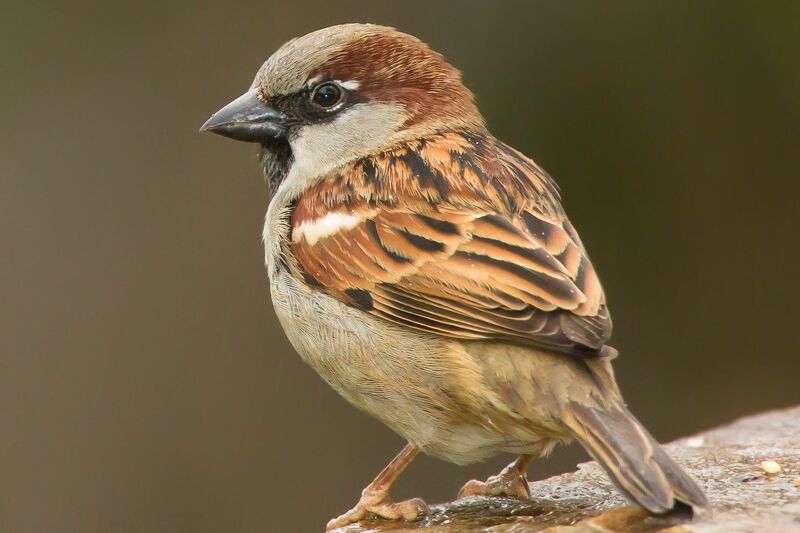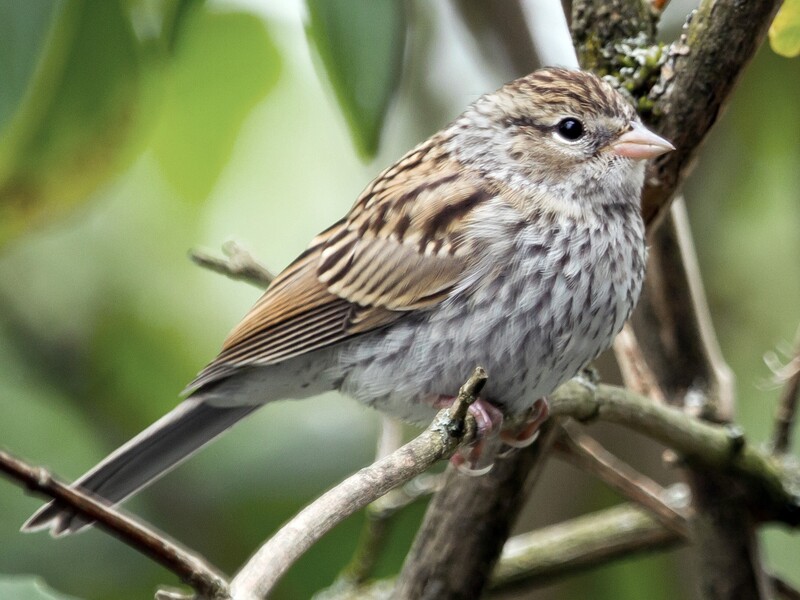Sparrows. It seems there are a gazillion of these little brownish critters flitting about everywhere–in backyards, in parks, in city settings, and even indoors in grocery stores where electronic sliding doors regularly invite them in. No matter where we find them, these small industrious birds seem to keep themselves busy making nests and foraging for food. They have to make the ends meet just like the rest of us, after all. In this article we’re exploring how long sparrows tend to live for, and some of the things that may be threatening their population.
As common as they are, or perhaps because they are so common, we don’t tend to give these dull-colored, little passerines much attention. And yet we always seem to see them around. It does make one wonder how long sparrows live.

Happy Birthday to You!
It’s difficult to discern how long sparrows live, or for that matter any species of bird. It’s not like they hang around to fill out census forms each year. They don’t get wrinkly around the eyes either. So while some age data is gathered by banding and recapturing birds, other information must be estimated.
It is generally understood that songbirds that survive the nestling and fledgling stage and who rear at least one brood will continue on each year until they die for the most part as a result of predation. It is estimated that adult songbirds have about a 70 percent chance each year of being killed by a predator. Sooner or later something takes their life. Few die of old age.
How long sparrows live in the wild depends in part also on which species of sparrows being discussed. There are about 43 species of Old World aka “True” sparrows distributed around the world. These are members of the passeridae family of which the common house sparrow is a member. There are also another 138 species of New World sparrows which are more closely related to Old World finches.
Below are the maximum recorded lifespans of but a few sparrow species, compiled by Dr. M. Kathleen Klimkiewicz of the Bird Banding Laboratory of the U. S. Fish and Wildlife Services.
- House Sparrow: 13 years, 4 months
- Song Sparrow: 11 years, 4 months
- White-crowned Sparrow: 13 years, 4 months

Environmental Factors
A sparrow’s environment will also play a role in how long it may live. While few species are bred in captivity, there are a few, including golden song sparrows, cinnamon-breasted rock buntings, and rufus-collared sparrows. Those held in captivity will no doubt live longer than birds in the wild because they are protected from predators and are provided with readily available food sources. They don’t have to knock themselves out foraging for food, watching for predators, or migrating for that matter. And if they get sick, they get good veterinary care.
Free-living sparrows living in cities, on the other hand, tend to live much shorter lives, their demise often due to pets (darn those cats!), limitations on food sources, and human-created problems. If you’ve ever been inside a home or office building and heard a loud thump from a sparrow or other songbird mistaking a freshly cleaned plate glass window for a clear flight path, you’ll understand. For these city dwellers, nine months is not an uncommon lifespan.

Sparrow Predators
What are the sparrow’s predators? They have quite a few. Birds of prey like hawks and owl are up high on the list. Snakes and foxes, cats and dogs find them tasty as well. And then there are raccoons and snakes, crows, jays, and grackles that will go after their eggs.
Humans can pose a problem for sparrows as well–sometimes intentionally, and sometimes not. Agricultural poisons are sometimes responsible for sparrow deaths. Humans may also destroy nests built in inconvenient nooks and crannies of their homes.
The sheer number of threats have made the sparrow a cautious bird. Though they may live amongst their predators, they tend to keep a cautious eye on them.
Heads Up!
While an abundance of predators can severely reduce the numbers and lifespans birds, it has always been understood ecologically that the reduction was due to predators directly killing their prey. However, a study turns that theory on its end.
In a 2019 ScienceDirect.com article, “Ecology of Fear,” researchers Liana Zanette and Michael Clinchy discuss their study of predators and their prey populations, specifically the psychological impact of induced stress brought on by fear of predation.
Part of the study included a look at a population of song sparrows living in the wild where they actively eliminated all predators from their environment, replacing them with playbacks and predator calls to create the impression of risk. Zanette and Clinchy found that the mere introduction of “perceived” predation risk resulted in a 40 percent reduction in offspring.
Further, their research concluded that frightened prey eat less as they spend more of their time on increased vigilance. “One of the most well-established trade-offs is that scared prey eat less, because you cannot have your head up looking for predators and your head down looking for food at the same time,” the authors wrote.

Threats from Climate Change
Sparrows have proven themselves to be adaptable birds, especially around humans and household pets. But there are some forms of predation that are less noticeable, often until it is too late. For those sparrows whose breeding range falls along the shoreline, their numbers are facing an increasing threat.
A study in recent years, published in The Condor: Ornithological Applications looked at fifteen species of seaside and saltmarsh sparrows that live along the U.S. Atlantic and Gulf coasts. At the time of the study, there was an estimated 60,000 birds of this type living along the coast from Maine to Virginia.
Predators and flooding are the most common causes of destroyed nests for these species. As well, because we humans love the beach also, more and more habitat has been taken from them for human housing. And as the climate rapidly changes and saltmarsh ecosystems are increasingly threatened, these species are in greater danger of losing their habitat and becoming extinct.
The study specifically focused on estimating population trajectories for these species in the Edwin B. Forsythe National Wildlife Refuge in New Jersey. The study found that just a one foot rise in sea level would create a corresponding decrease of .35 percent of saltmarsh sparrows. A 2-1/2 foot rise corresponded to a .56 percent decrease.
The trajectories for seaside sparrows were more promising, showing no decrease at either rise in sea level. As a result, the study concluded that while seaside sparrows may not be impacted at these changes in sea levels, unless humankind intervenes, saltmarsh sparrows would face extinction in 30 years.
Long Live Our Sparrows!
With so many challenges to living in the wild, it’s surprising that sparrows live as long as they do. But it also explains the sometimes wild variations in their lifespans. Did you know the longest living sparrow recorded made it to its 23rd birthday?
However long they live, sparrows do seem to pack a lot of living into their days. In their lifetimes they constantly work on their nest building skills, and they raise multiple broods of young before sending them on their way.
And they don’t let us forget they’re around either. The next time you’re in the produce section of your local grocery store and hear some friendly chirping, look up from the peaches you’ve been perusing. Chances are there’s a busy little sparrow building a nest up above you.
Related
- In a related article, we explore how long doves live. As it turns out, doves and sparrows share a number of similarities that seemingly impact their average lifespan: the main contributors being environment and predators.
- To steer down a more Disney like timeline, we invite you romantics to check out our article: What Birds Mate For Life? Yes, believe it or not not all birds are wild cheaters! Some of them hunker down just like a lot of us human beings do.
Leave a Reply